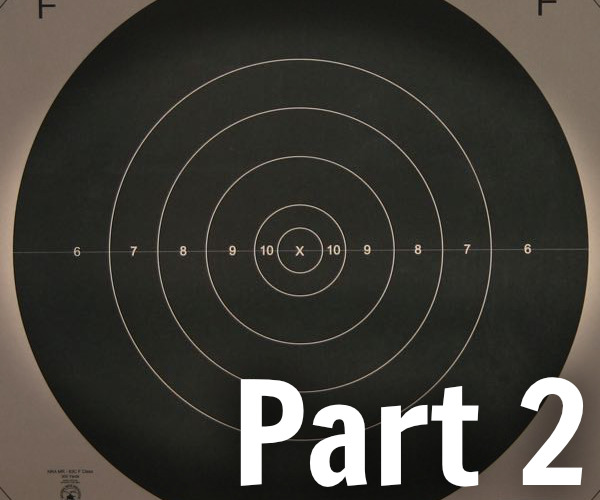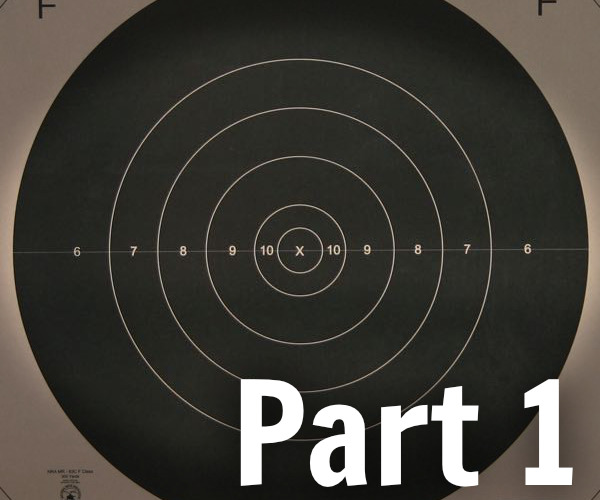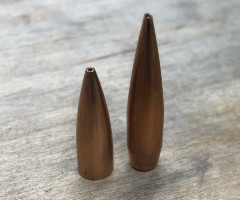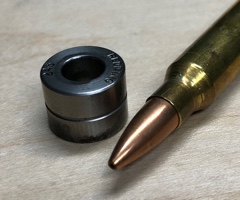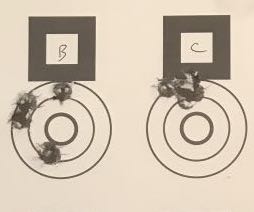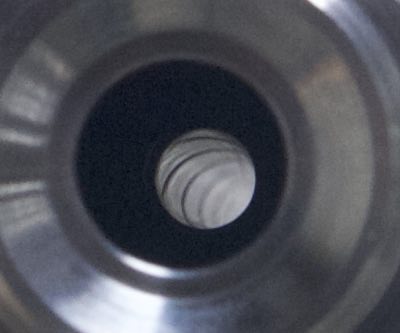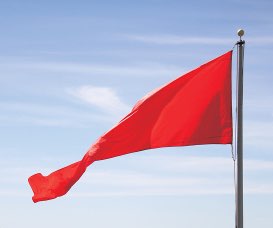F Class Basics Part 1: Introduction and Equipment
By Damon Cali
Posted on February 28, 2020 at 10:56 AM
Note: The intent of this series pf articles to provide new shooters a basic understanding of the F Class shooting discipline as practiced within the rules set by the National Rifle Association. It will be assumed that the reader is familiar with basic firearms safety and marksmanship, and has at least read about basic reloading practices.
This is not an advanced guide to cracking the top spot at Nationals. It’s a shortcut for new competitors to help get them up to speed — the hope being that a little knowledge can prevent a lot of frustration and wasted money.
I have tried to stay away from specific brands of equipment. While there are some pictures of typical gear in this article, don't take that as a recommendation.
The series is broken into two articles:
- Introduction and Equipment (this article)
- Ballistics and Reloading
What is F Class?
F Class is a subdivision of NRA High Power Rifle shooting in which shooters shoot at paper targets at known distances at medium and long range at a slow fire pace. Where traditional High Power Rifle shooters use slings without additional support, F Class shooters may use either bipods or front rests in combination with rear sand bags. Because the additional support allows for greater precision, the F Class targets have smaller scoring rings than their traditional High Power Rifle counterparts. The X ring on an F Class target is about 1/2 MOA regardless of the distance, so very high precision is required to score well.
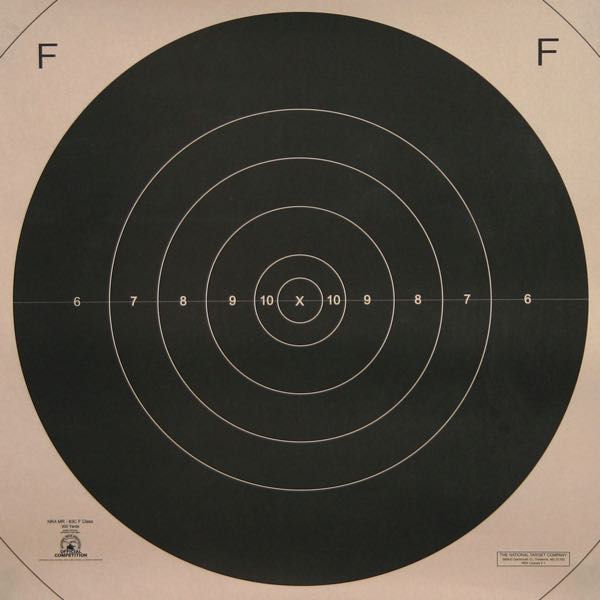
Although there are a variety of courses of fire available within the rules, in practice most F Class shooting is at either 600 yards (mid range) or 1,000 yards (long range). Competitors shoot slow-fire (1 minute is permitted per shot fired), and targets are scored between each shot, allowing the shooter to see where his previous shot hit the target.
A typical match might consist of three 20-shot strings for a total of 60 shots for record. Additionally, two or more sighters are allowed prior to the record shots for each string of fire. The exact number of sighters depends on the particular match. Sighters are shots that are fired that do not count towards your score. Competitors use them to confirm their zeros and to get a feel for the predominant wind conditions. Record shots are just that - they count as part of your recorded score.
Each shot is scored (Xs count as 10s, and are used as tie breakers), and the competitor’s score is that total for all of his shots. The largest target ring has a value of 5 points. Anything outside that ring counts as a miss (zero points) even if the shot hits the target board.
Rules - Open vs TR & Classifications
F Class competitors are broken into two equipment classes - Open and TR (Target Rifle). Both classes shoot the same targets and follow the same course of fire. The difference lies in the rifles and supporting equipment.
TR (Target Rifle)
TR rifles must be chambered in .223 Remington or .308 Winchester. Any bullet weight is allowed. TR rifles may use bipods for support but cannot use a front rest. The total weight of a TR rifle must be less than 8.25 kg (about 18 pounds), which includes the weight of the bipod and any items attached to the rifle during shooting.
Open
Open class rifles may use any caliber under .35. They may use either a bipod or a front rest (although almost all serious shooters use a rest). The weight limit is 10 kg (about 22 pounds), which does not include the rest, but does include a bipod, if used.
For full details on F Class rules, shooters are encouraged to review the official High Power Rifle rule book. I would encourage all competitors to read it prior to shooting your first match.
Classifications
Shooters are classified by the NRA with the following classifications, in increasing order of achievement: Marksman, Sharpshooter, Expert, Master, High Master. At larger matches, shooters compete against other shooters of the same classification. New shooters are classified as Masters until they have enough shots recorded to be reclassified. There are separate classifications for mid-range and long-range, but not for TR or Open. Yes, that makes moving up harder in TR, which TR shooters will be all too happy to point out. See the rule book for specifics on how and when you get reclassified.
The basic procedure is that you shoot a match, and the match director submits your scores to the NRA. Once enough matches have been received by the NRA, you will be assigned a class based on the scores of your recent matches. In general, you can only move upwards in classification.
Equipment
One of the great things about F class is that it blends the technical demands of benchrest with the shooting style of high power. To compete at the top levels of F class, you must have your equipment in order.
Equipment Classes
There are a few things to consider before choosing your equipment class. First is cost. A top of the line Open setup will cost slightly more than a top of the line TR gun, but only because a high end front rest costs significantly more than a high end bipod. Otherwise, from an equipment cost and cost to shoot, the classes are fairly similar. Over the long run, the cost difference between the classes is negligible.
TR takes a little more effort to shoot a good score than Open. This is due to the ballistic limitations of the permitted cartridges, and to the advantage in gun handling ability granted by the heavier weight limit and use of a front rest. It is not uncommon to see good TR shooters score better than average Open shooters. However, Open shooters have a clear advantage.
So really it comes down to what do you want to shoot. TR offers a respite from the arms race of choosing a cartridge that will outshoot the next guy, and provides an arguably more level playing field. On the other hand, not all .308’s (or .223’s) are equal and if you want to shoot competitively in TR, you’ll need a very specific setup.
Open guns tend to look more like long range benchrest rifles. If you want to push ballistic limits and you enjoy technical details as much as shooting, then you’ll be happier shooting Open. (If you are a benchrest competitor who wants to try F Class, there is a good chance your light gun qualifies, and will be competitive). One more important point - muzzle brakes are not allowed in either class. Please remove them from your rifle as a courtesy to the shooters next to you. Bottom line, pick a class and enjoy it. It really doesn’t matter. Either one can get you started.
Caliber Selection
For TR, this isn’t much to discuss. .308 Winchester is the easy choice, especially at 1,000 yard events. At 600 yards, a .223 set up to shoot the heaviest available bullets (90 grain class) can be very competitive. It also offers the advantages of being less expensive to shoot and having significantly less recoil. If you shoot lot, ammunition costs can be significant.
In Open class, the sky is the limit. Here’s what you are after:
- Low enough recoil to shoot 70 rounds a day and not regret it
- Availability of high quality brass and appropriate (high BC match) bullets
- Pure ballistic performance
- Reasonable barrel life
At 600 yard matches, you’ll find quite a few rifles chambered in 6mm BR, 6mm Dasher, 6mm XC, .260 Remington, 6.5 Creedmoor, 6.5x47 Lapua, and other similar cartridges. Given the proper bullets, they are all very capable and easy to shoot.
At 1,000 yard matches, you start to see the 7mm’s take over, with the various flavors of the .284 Winchester being the most popular at the time of this writing. The 7mms have a little more kick to them and burn a little more powder, but the ballistics are hard to beat. You will see quite few of these on the line at 600 yards as well, but they offer less of an advantage at Mid Range (300-600 yards).
If you're looking for an Open class easy button, it's the .284 Winchester or a 6BR variant (at 600).
Actions
First, there is nothing wrong with a stock Savage, Remington, or similar “hunting” grade actions. If you’ve got one, go for it. The Remington 700 is sort of the industry standard bolt action rifle and has a very robust aftermarket. A standard action can be competitive at the highest levels, especially if it has been cleaned up by a competent gunsmith.
That said, there are nicer options. The vast majority of serious competitors choose single shot bolt actions. Having a magazine is not a deal killer, but a purpose made single shot is a little easier to work with on the firing line.

Various custom makers offer “clones” of the Remington 700 - essentially higher quality, closer tolerance copies of the design, with significant tweaks and improvements in certain areas. Often these actions have little in common with their Remington roots, maintaining only the same external footprint and trigger compatibility. "Clone" isn't really fair to these customs - they're not just copies. Other “custom” actions are totally different designs.
Things to consider when choosing an action are port location (right, left, or both), whether or not you want an ejector, the action’s weight (especially for TR), available triggers, and how easy it is to single load a round. (All F Class matches require single loading - you may have a magazine, but you may not use it to load rounds).
One note about ARs. You will see people shooting them and having a great time. They are more than capable of shooting at 600 or even 1,000 yards with the right bullets. However, you will not see them winning. Have fun with yours, but accept the limitations.
If you’re not sure what you want, it’s probably best to check out what other shooters are using and talk to them about what they like or dislike about their equipment. If possible, get behind the various options before you buy.
Stocks
Stocks are a personal matter, but there are some areas that you’ll want to focus on. First, the material. Fiberglass, carbon fiber, wood laminates, and aluminum are all popular, and the choice is really one of preference. You should be far more concerned about the configuration of the stock than what it’s made out of. The majority of serious shooters are using some sort of composite stock (fiber glass or carbon fiber).

For TR, consider the weight. While this isn’t a hard and fast rule, most competitors prefer to allocate as much of their weight limit to the barrel as possible, so a light stock is a good thing. The fore end of the stock needs to have a way to mount a bipod. Typically this is an Anschutz/Freeland rail (they are similar specs, but not exactly the same). You will also see some setups with picatinny rails or plain old sling studs as well. As long as it makes weight and securely attaches the bipod, you’re good to go.
The butt the stock is also very important in TR. First, you want it straight - often stocks have some built in angle that’s helpful for position shooting, but it will make F class shooting a little more challenging. When the toe of the stock rides the rear bag, you want it to recoil straight back, not at an angle to the side.
Also, the angle of the toe matters. Some shooters prefer a level toe, and to make vertical adjustments of the sight picture by manipulating the bipod. Others prefer an angled toe so that vertical adjustments can be made by moving the rifle backward and forward slightly in the bag, thereby raising and lowering the butt.

For Open class, you have a little more weight to play with, and shooters tend to focus on how well their rifle tracks in the bags. That means a benchrest-style wide fore end - something that is especially helpful for heavier calibers that tend to torque more when you fire them. Keep in mind that there is a requirement that the fore end width be 3" or less, which means that some of popular benchrest stocks cannot be used.
You also have the same choices to make about the stock’s toe. With Open class rests, it’s typically easier to make sight picture adjustments at the rest, so you’ll see more level-toed stocks in Open class.
There is also no reason to avoid chassis style stocks or tube gun stocks. These are typically associated with traditional sling shooting or field shooting, but there’s no reason they won’t work very well as F Class stocks. They are not the norm at the highest levels, but you do see quite a few of these stocks at club matches.
Triggers
A stock hunting trigger will work for F class. Most serious competitors, however, opt for an aftermarket trigger. This is one area you really need to consider when choosing an action. The Remington 700 and its derivatives have many, many options, while something like a Tikka (for example) has quite a bit fewer in spite of being a fine action.
You’ll see a wide variation in trigger weights and styles. Both two stage and single stage triggers are well represented on the line, and you’ll see trigger weights from a couple ounces all the way up to a couple pounds. Most competitors use a single stage trigger, and almost everyone shoots a trigger with a pull weight under a pound. Quite a few 2oz benchrest triggers make their way into F Class rifles.
Triggers are very much a matter of personal preference, so as with actions, do your best to try a few before deciding on a purchase.
Barrels
A custom barrel fitted with a properly configured chamber is perhaps the single most important modification you can make to a rifle. Most F class competitors use the heaviest contour they can get away with and still have a barrel in the 28-32” long range. For TR, that means something similar to a Heavy Palma contour. On Open guns, you see quite a few untapered straight barrels of considerable heft. (Some shooters refer to these as "straight taper" barrels, which is confusing, because they're not tapered.)
The brand does not matter very much, assuming it comes from a reputable maker. Neither does the rifling configuration. Stainless barrels are by far the most common.
What does matter is the chamber. A good starting point is to tell your gunsmith that you will be shooting F class and that you want a no-turn neck throated for the bullets you want to use. Make sure to get a twist fast enough to stabilize those bullets.
For TR, there are some pretty standard places to start - if you want a .308, that might mean a 1:11” twist barrel throated to shoot 185 grain Berger Juggernauts or Hybrids. If you’re a .223 shooter, you might settle on a 1:6.5” twist throated for 90 grain Berger VLD’s. Ask around for twist recommendations, and use the slowest one that will work for the bullet you want to use.
One thing to keep in mind is that barrels do not last long in F Class. A barrel that only shoots 3/4 MOA isn't really going to be competitive, although most shooters would consider that to be pretty good accuracy. So skip the flutes and muzzle threads (unless you want to use a tuner). Barrels are consumables in F Class, so keep cost in mind. You may only get 1500 rounds of competition grade accuracy from a barrel. Hopefully, you'll get more, but they go quickly.
Scopes
The ideal F Class scope has high magnification - at least 36X, and preferably up to around 50X or so. It is useful to be able to favor one side of the X ring, and to do that you need to be able to see it clearly. You will also want 1/8 MOA clicks, as they offer the finest adjustment out of the commonly seen options. Reticles are a personal choice. Some competitors prefer the clean look of a simple cross hair or target dot, while others will make use of graduated reticles while dialing in sighters. You will want a second focal plane scope. F Class is a known distance, highly precise, slow fire discipline, and the finer reticle will be appreciated. The benefits of a first focal plane scope are not needed in F Class and most have unacceptably thick reticles.

What you do not need to do is spend a lot of money. Fixed power 36X Benchrest scopes from Weaver or Sightron can be had for under $500 brand new, and will suffice with very little disadvantage to the more expensive scopes.
Scope Mounts
Weight is really all you care about here. Get what you want. If it holds the scope, it’s doing its job. A 20 MOA picatinny rail and suitable rings will get the job done.
Bipods
There are a lot of bipods on the market. Without going into detail about specific models, they tend to fall into three categories.
First, you have tactical style bipods like the ubiquitous Harris. While not terribly popular among serious F class competitors, you do see them and you do see shooters shooting very well with them. The disadvantages of these is that hey tend to be narrower, and they usually require a specific shooting style (“loading the bipod”) to shoot effectively, which may or may not be ideal. They are also not typically designed with the ultimate in light weight in mind.
Second, you have bipods designed specifically for F TR. They tend to be “ski type” bipods where the shooter uses the bipod more like a rest than a tactical style bipod. They also tend to be wider and more stable than tactical bipods. The only real downsides to these are that they tend to be more expensive and they’re a bit awkward -you wont’ want one to do double duty on your hunting rifle. The majority of bipods on the line tend to fall into this category.
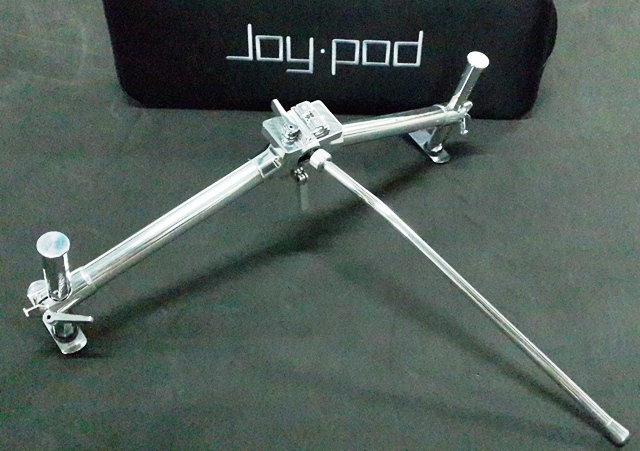
Third, you have the “joystick” type bipods. These are also purpose designed for F TR, and have a “joystick” mechanism that allows the sight picture to be adjusted by your non firing hand. Usually the most expensive option, it’s really a matter of personal preference and weight that will determine if a joystick bipod is what you want.
Front Rests
Open class competitors will want a front rest. The typical heavy front rest you can get at the sporting good store will do the job. But as with all things, you can spend a lot more for bells and whistles. The basic rests tend to be only crudely adjustable, and may or may not be as heavy as we’d like for F class. But they are certainly up to the task if you keep their limitations in mind.
The next step up is a higher quality (typically heavier) benchrest front rest. These are usually designed to accommodate 3” wide fore ends, and typically have some mechanism to adjust both windage and elevation while shooting - at a bench. Sometimes these can be a little awkward to use in a prone position, so keep that in mind, as some configurations are a little more convenient than others.
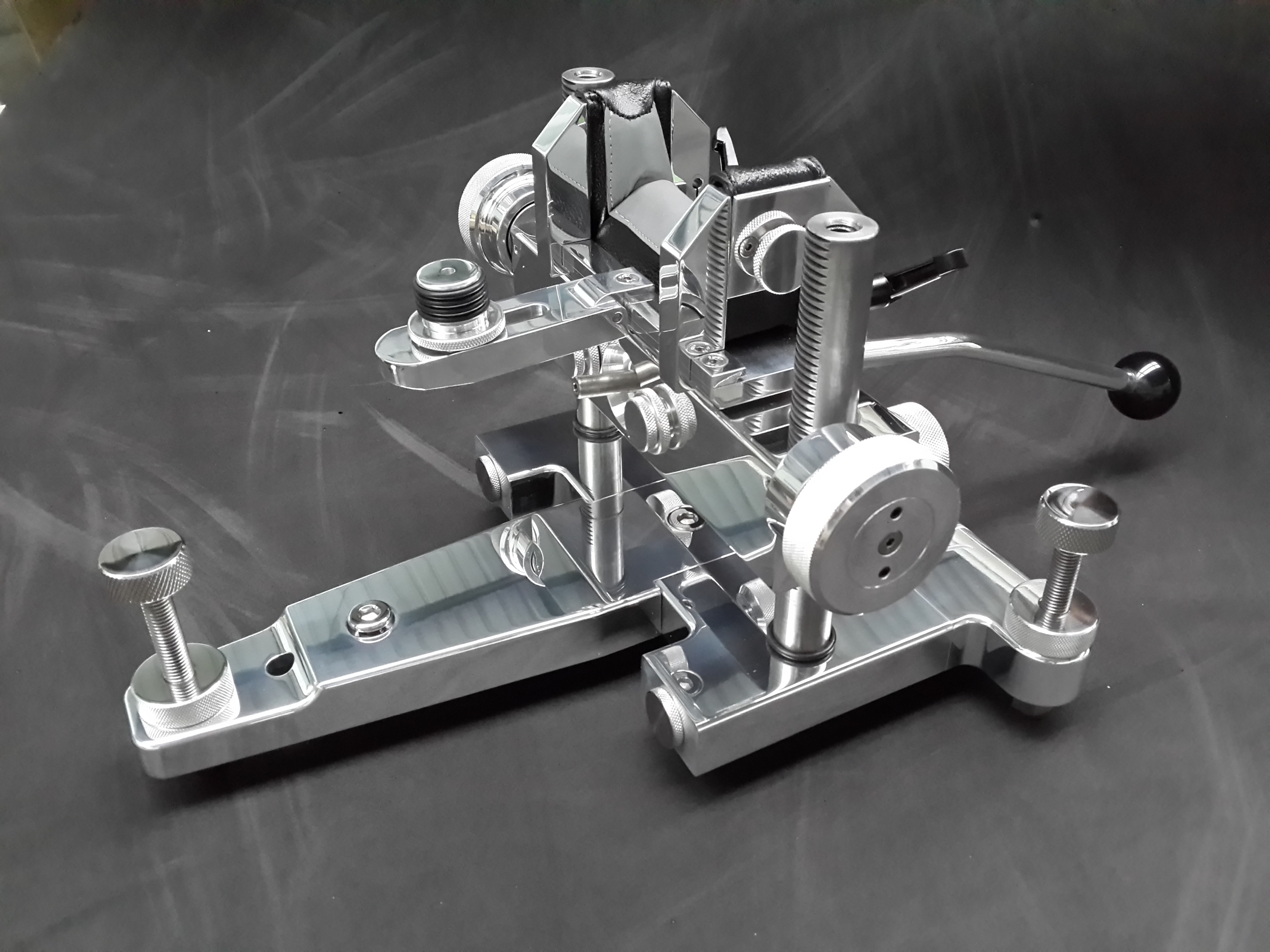
At the high end there are several semi-custom (and very expensive) rests that are purposefully designed for F class and benchrest. They’re big, heavy, finely made works of art. These are not the sort of gear that’s typically recommended for beginners due the cost and the specific nature of the features, but they are very nice. At the end of the day, they’re just fancy rests. It’s probably worth putting off the purchase of one of these until you’ve settled into Open class and you have an idea of what exactly you want out of your front rest.
Rear Bags
Most shooters use benchrest-style rear bags are used for both TR and Open. Higher quality, flat-bottomed bags all work well, and you’ll see all the manufacturers represented. There’s not much to say about rear bags other than that heavy is good, and you want to pay attention to the height and configuration of the ears and make sure it’s a good fit for your stock. Some have different ear materials (leather, cordura, or a slick coated material). Unfortunately, there’s not a terribly good way to know which bags work for you other than to try them.

You will also see some shooters using softer “tactical” style sand bags that are designed to be squeezed by the non shooting hand to make fine sight picture adjustments. There is no right way to use a rear bag - you just have to test and practice to find out what works best for your shooting style and equipment.
Ammunition
Find out how many rounds you will need for the match before hand. don’t forget to include sighters and any blow-off (fouling) rounds you will need. It never hurts to bring a few extras in case there is any confusion on the line that requires more shots to be fired. To be competitive in F Class you will need handloaded ammunition. That's no reason not to start out with high quality match grade factory ammo. Just know that you will be reloading at some point if you continue with F Class.
Shooting Mat
You don’t technically need this, but almost everyone uses one. It keeps your clothes clean and provides for a little comfort, especially on concrete or wet surfaces.
Eye and Ear Protection
This is obvious, but you really need this. A hat is also recommended for additional safety when pulling targets in the pits.
Open Bolt Indicator
Also called an Empty Chamber Indicator (ECI), this is nothing but a plastic flag designed to be inserted into the rifle’s chamber so that it is rendered safe in a manner that is visually obvious. They are required safety items. Buy a few - they're cheap.
Spotting Scope
Your rifle scope will have enough magnification to see the spotter and scoring disc. Some shooters like to use a spotting scope while shooting to read the mirage. (Looking at mirage patterns gives an indication of wind conditions).
You will absolutely need a spotting scope for scoring. If you don’t have one, don’t worry. You only need one for every three shooters, and the chances are good that someone will have one. But do bring one if you can. A good quality 60-80mm scope around 25-30x is ideal. A Long Eye Relief eye piece is also nice to have so that it doesn’t interfere with shooting glasses. You do not need to spend huge amounts of money for a top of the line scope. We're scoring targets, not watching birds.
Chair or Stool
You need somewhere to sit when scoring. Anything will do.
Tools
Make sure to bring whatever tools you need for your rifle. You would be surprised by how many matches are ruined by a loose screw here or there. Even if you don’t need it, someone else will thank you for thinking ahead. A drop-in close fitting brass rod is also helpful in case of a stuck case or bullet.
Food and Water
A typical match lasts the better part of a day. Bring enough food and especially water to keep you going through the summer heat.
Sunscreen, Rain Gear, and Bug Spray
Don’t forget sunscreen and bug spray for obvious reasons. A brimmed hat of some sort is also a great thing to have when the sun comes out. Some light rain gear comes in handy in case of bad weather, as does a small tarp to keep your gear dry.
Cash
Money for the entrance fee. Do not count on the match being able to take credit cards or checks.
Pen/Paper/Clipboard
Sometimes it’s nice to take notes during a match. Some shooters like to log every shot. Others don’t. In any case, it’s good to be prepared with a pen, paper, and clipboard to note the conditions, zeros, and other bits of information that you find pertinent.
Next Up: Reloading For F Class
Now that we've got the basics sorted out and you have a sense of the shooting gear involved, it's time to take a look at reloading for F Class competition, which is part 2 of the series (coming soon).
Damon Cali is the creator of the Bison Ballistics website and a high power rifle shooter currently living in Nebraska.
The Bison Ballistics Email List
Sign up for occasional email updates.
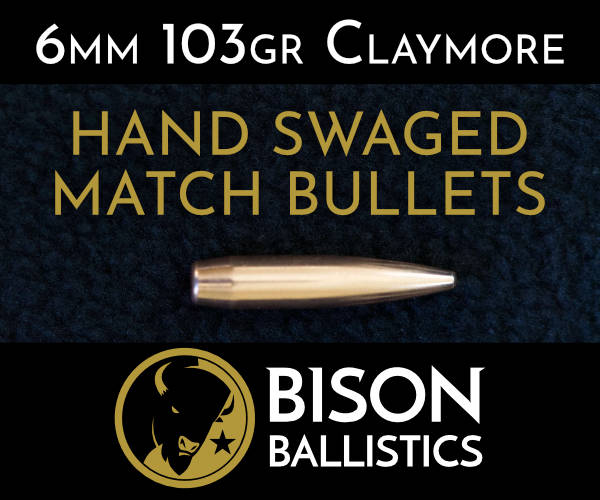
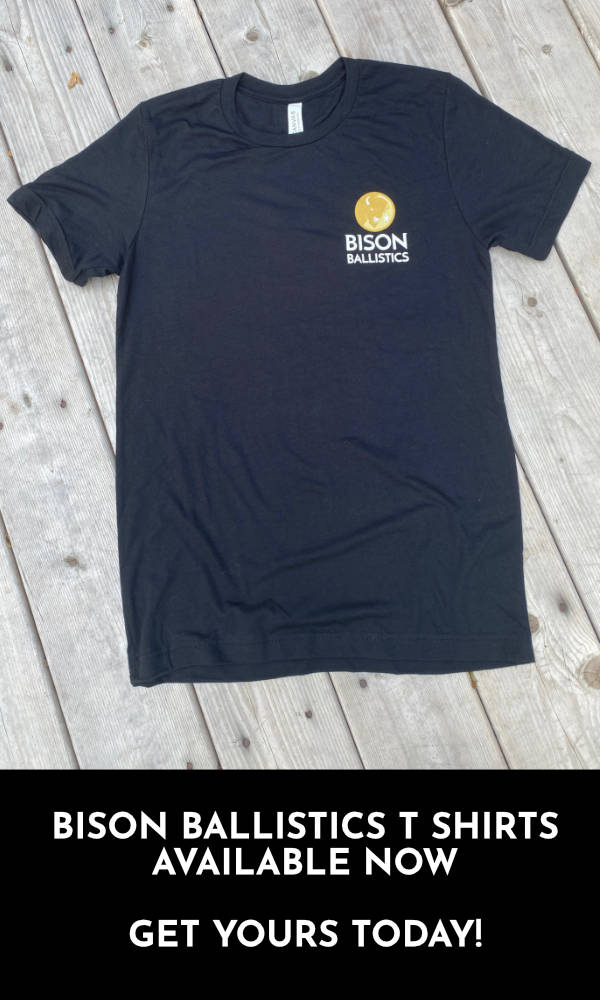
Want to Support the Site?
If you enjoy the articles, downloads, and calculators on the Bison Ballistics website, you can help support it by using the links below when you shop for shooting gear. If you click one of these links before you buy, we get a small commission while you pay nothing extra. It's a simple way to show your support at no cost to you.
